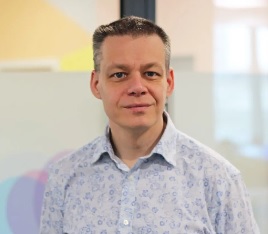The Challenge of Childhood Cancers
Right now in the UK, approximately one in five hundred children under fourteen will develop cancer. That’s one child in every single school, village, town, and city throughout the UK. Worryingly, those rates are on the increase. Whilst nearly ninety per cent of children with cancer survive for five years or more, those impressive response rates mask a lifetime of long-term healthcare challenges.
A small, but important, patient group
Traditionally, cancer is often associated with old age, with over half of global cancer deaths occurring in individuals aged seventy and over. In the UK, that’s about eighty-five thousand deaths a year. Childhood cancers make up just 1% of all cancer cases. But while overall survival rates in adults have slightly improved, response rates to children have hardly changed over the past two decades. Despite over a thousand new oncology drugs in clinical trials, only a handful are being evaluated for their potential to help children and young adults. Considering that many of our early advances in cancer chemotherapy came from trials in children’s cancers, particularly blood cancers, this seems a huge backward step.
How did we end up in this situation?
Age Matters
The challenges of paediatric oncology therapies are very different from those of older patients.
Children and young adults are not simply “small grown-ups” – their physiology is altered considerably and their accelerated natural growth rate sensitises them to suffer more severely from the side effects of conventional therapies. Their tumours also exhibit distinct behaviours, impacting how targeted therapies perform compared to adult cancers with similar histology and genetic drivers.
Whilst children’s cancers are relatively simple on a genetic level, with an average of just four significant mutations, after treatment this mutational burden can increase to over six thousand potentially cancer-causing mutations. As a result, these therapies will pre-dispose many of them to secondary cancers before they reach the age of thirty.
Apart from the risk of secondary cancers, these treatments also cause major developmental problems in later life, including cognitive impairment, hormonal imbalance and fertility problems, systemic organ damage and other medical complications. Recent studies have highlighted the severe psychological impact of these side effects, with pain and depression-related suicides now recognised as a major cause of mortality in young adults allegedly “cured” of their original disease.
An extension of time with loved ones, certainly, but a long way from a truly positive outcome.
Even for individuals who initially respond to therapy, upon relapse and cancer re-emergence, future therapeutic options are sadly limited. If relapse occurs within a year, the survival odds on subsequent treatment plummet to a mere three per cent.
Toward a better future…
Fortunately, there’s a welcome shift happening in the field of paediatric oncology.
As we actively delve into the genetic makeup of children’s cancers, it’s clear that some of our novel therapies can genuinely benefit our young patients.
Streamlined regulatory frameworks and guidance now make it easier to bring these treatments to the clinic for young patients. In the US, laws like the Research to Accelerate Cures and Equity (RACE) for Children Act now require the evaluation of new cancer drugs for children if the molecular target is relevant to their cancers. Collaborative international initiatives also make coordinating clinical trials more straightforward.
Simple adjustments, like converting our preferred tablet form to a syrup or liquid for easier dosing, can have significant positive impacts.
Such changes are starting to lead to step changes in paediatric cancer care.
For example, the recently approved inhibitors of TRK kinase have successfully treated patients as young as four months, with dramatic (and well-tolerated, kinder) responses to therapy. Trials are now investigating ways to offset the long-term consequences of the harsh first-line therapies of combination chemotherapy. It’s hoped that drugs such as dexrazoxane and levocarnitine may protect children’s hearts and livers from drug-induced damage. Additionally, Alzheimer’s drugs like memantine may help protect vital cognitive function. We’re interested in this overlap of therapeutic areas at Sygnature Discovery, where our therapeutic experts in oncology, neuroscience, inflammation and more collaborate to comprehend these innovative treatment approaches.
Conclusion
Looking forward, optimism has increased in recent years. But progress is still far behind that in “grown-up” cancers, emphasizing the ongoing importance of keeping these young patients at the forefront of our efforts to advance therapies toward the clinic. This ensures patients have the best possible chance of survival and a genuinely cancer-free future.
We strive to consider all patient populations in our drug discovery programmes, ensuring that everyone affected by cancer receives the therapies they deserve, regardless of age or background. Drawing upon our extensive drug discovery expertise, and working alongside experts in areas such as safety pharmacology, we work with our customers to deliver new and effective treatments to all those in need, encouraging and helping them to think creatively about where their projects may deliver additional clinical benefit.
About the author

With over 23 years of expertise in medicinal chemistry and drug discovery, Dr Allan Jordan spearheaded oncology research at Cancer Research UK, earning a prestigious Flame of Hope award for exceptional contributions to research engagement. Holding a Chemistry BSc (Hons.) and a PhD from the University of Manchester, Allan is a renowned global speaker in the field of drug discovery.
